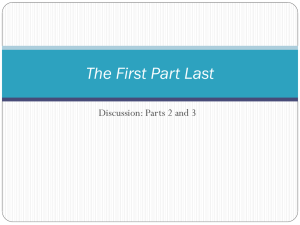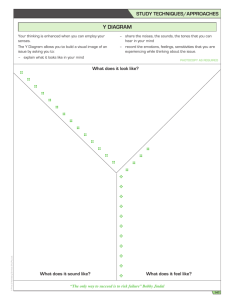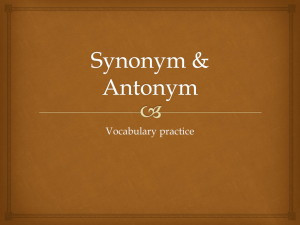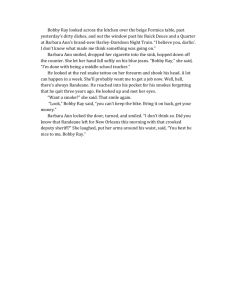Test 2 (Fall 2012)
advertisement
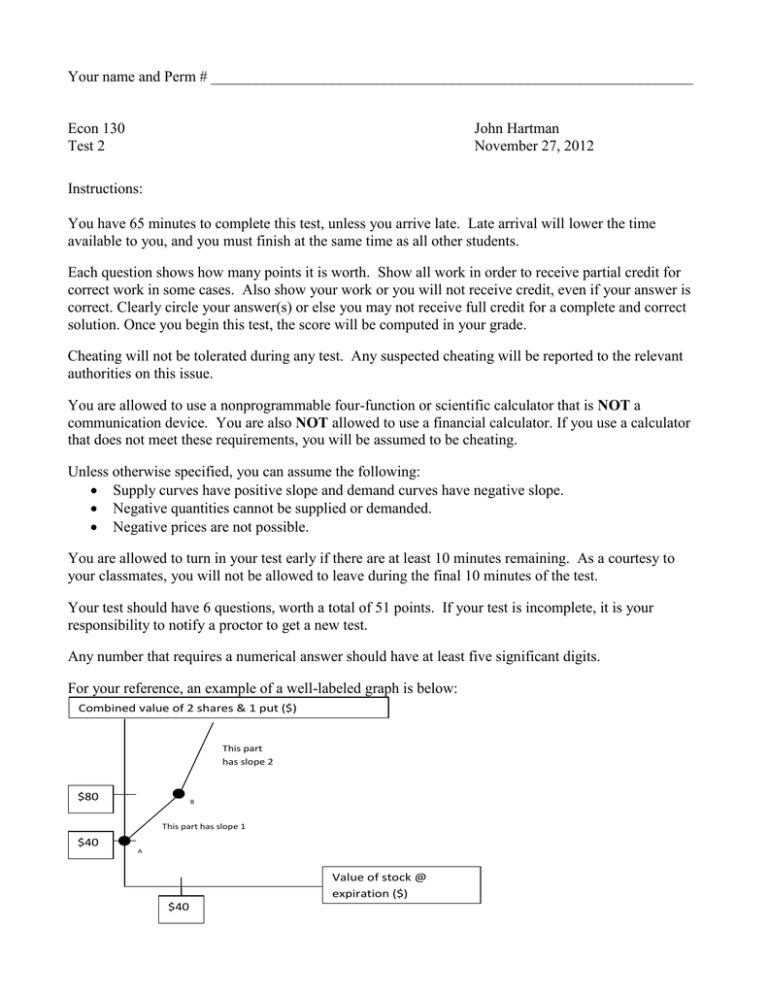
Your name and Perm # ________________________________________________________________ Econ 130 Test 2 John Hartman November 27, 2012 Instructions: You have 65 minutes to complete this test, unless you arrive late. Late arrival will lower the time available to you, and you must finish at the same time as all other students. Each question shows how many points it is worth. Show all work in order to receive partial credit for correct work in some cases. Also show your work or you will not receive credit, even if your answer is correct. Clearly circle your answer(s) or else you may not receive full credit for a complete and correct solution. Once you begin this test, the score will be computed in your grade. Cheating will not be tolerated during any test. Any suspected cheating will be reported to the relevant authorities on this issue. You are allowed to use a nonprogrammable four-function or scientific calculator that is NOT a communication device. You are also NOT allowed to use a financial calculator. If you use a calculator that does not meet these requirements, you will be assumed to be cheating. Unless otherwise specified, you can assume the following: Supply curves have positive slope and demand curves have negative slope. Negative quantities cannot be supplied or demanded. Negative prices are not possible. You are allowed to turn in your test early if there are at least 10 minutes remaining. As a courtesy to your classmates, you will not be allowed to leave during the final 10 minutes of the test. Your test should have 6 questions, worth a total of 51 points. If your test is incomplete, it is your responsibility to notify a proctor to get a new test. Any number that requires a numerical answer should have at least five significant digits. For your reference, an example of a well-labeled graph is below: Combined value of 2 shares & 1 put ($) This part has slope 2 $80 B This part has slope 1 $40 A Value of stock @ expiration ($) $40 1. (7 points) One hundred fifty people live in Lookout Falls. Sixty of these people have individual demand curves for a given public good by P = 30 – Q, where P is price and Q is number of units. Fiftyfive of these people have individual demand curves for the same good given by P = 50 – 2Q. The final thirty-five people have individual demand curves for this good given by P = 100 – 5Q. The marginal cost of this good is 500. How many units of the good are provided in an efficient outcome? 2. Bobby has a utility function of U(I,L) = IL – 60L, with I representing income earned today, and L representing number of hours of leisure today. Bobby can work as many hours as he wants today for $10 per hour. Assume that Bobby has 16 hours today for work, leisure, or a combination of the two. (a) (5 points) Without any government assistance programs, how many hours will Bobby work today? (b) (7 points) If the government offers a $20 cash transfer to anyone who receives $50 or less in income from working today, how many hours will Bobby work today? You need to justify your answer completely to get all points. (Note: The $20 cash transfer, if taken, counts as income earned for this problem.) 3. (8 points) Margaret is in the hospital from an extreme skiing event that she competed in. The total cost of being in the hospital is 3,000Q + 200Q2, with Q denoting the number of days in the hospital. Margaret’s total benefit of being in the hospital is 12,000Q – 350Q2. How long will Margaret want to stay in the hospital if she must pay 25% of the costs of staying in the hospital? (Note: Fractional days are possible here.) 4. Joe and Paul are both grain farmers. They decide that it would be profit maximizing for both farms to build a single grain silo to be used for both farms. They decide to use Lindahl prices to determine the amount of money they will spend on the silo. Specifically, they will negotiate cost sharing until they agree on a cost-sharing distribution that adds up to one for a given amount of spending. If Q denotes the Q amount of spending on the silo, then Joe’s share is S M 0.6 and Paul’s share is 150,000 Q . S H 0.55 250,000 (a) (4 points) How much will be spent on the silo in equilibrium? (b) (4 points) What combination of Lindahl prices will lead to equilibrium? In other words, what will Joe and Paul’s shares be in equilibrium? 5. Assume that there are two periods of consumption: Working years (time period 1) and retirement (time period 2). Because of the Social Security system, Valentino receives an endowment of 500 units during his working years and 150 units for his retirement. Assume that Valentino’s consumption in periods 1 and 2 are c1 and c2, respectively, and his utility is c1c21.5 = c1c23/2. Also assume that he can save or borrow between periods 1 and 2 at a rate of 150%? (Notes: 150% of interest is earned for any money saved between the two time periods. In other words, 150% of interest is accrued for any money borrowed between the two time periods. Also, the endowment is how much Valentino has after contributions and benefits from Social Security.) (a) (6 points) How much does he consume in each time period to maximize utility? (b) (3 points) How much does he save or borrow privately during time period 1? Make sure to clearly state if your number represents units saved or borrowed. 6. (7 points) The government is planning how much to spend for a new project. Assume that spending on the project is y dollars. The total benefit of the project to society is 1,000,000 ln(y). What is the efficient level of spending on the project? (Hint: You may need to know the derivative of the natural log (ln) function. The derivative of ln(u) with respect to u is 1/u.)
